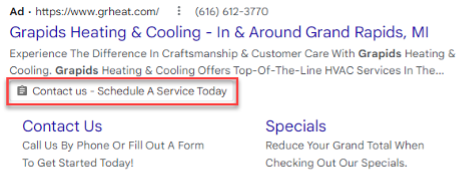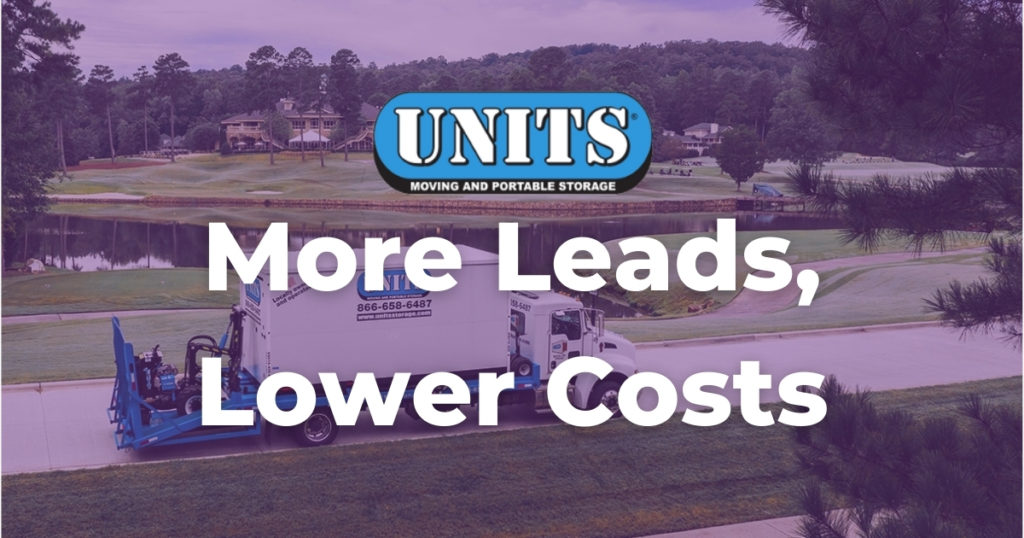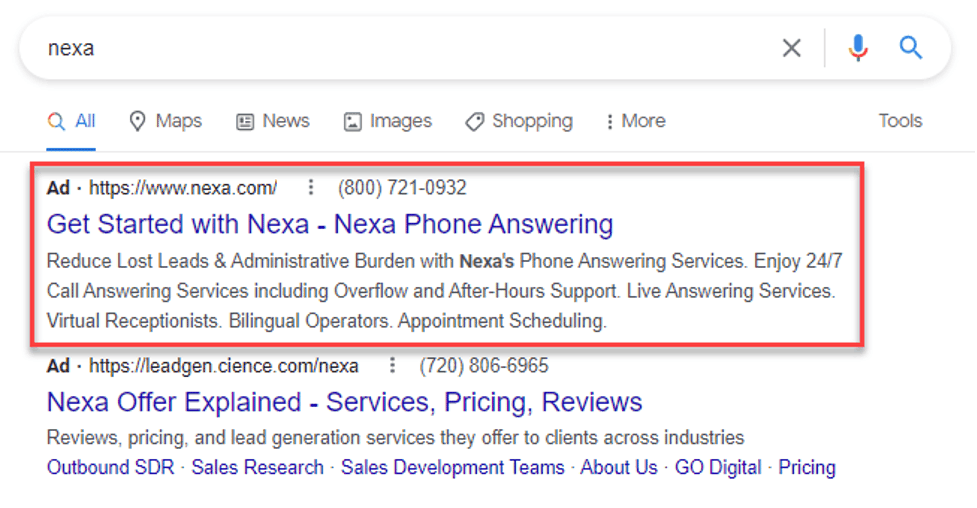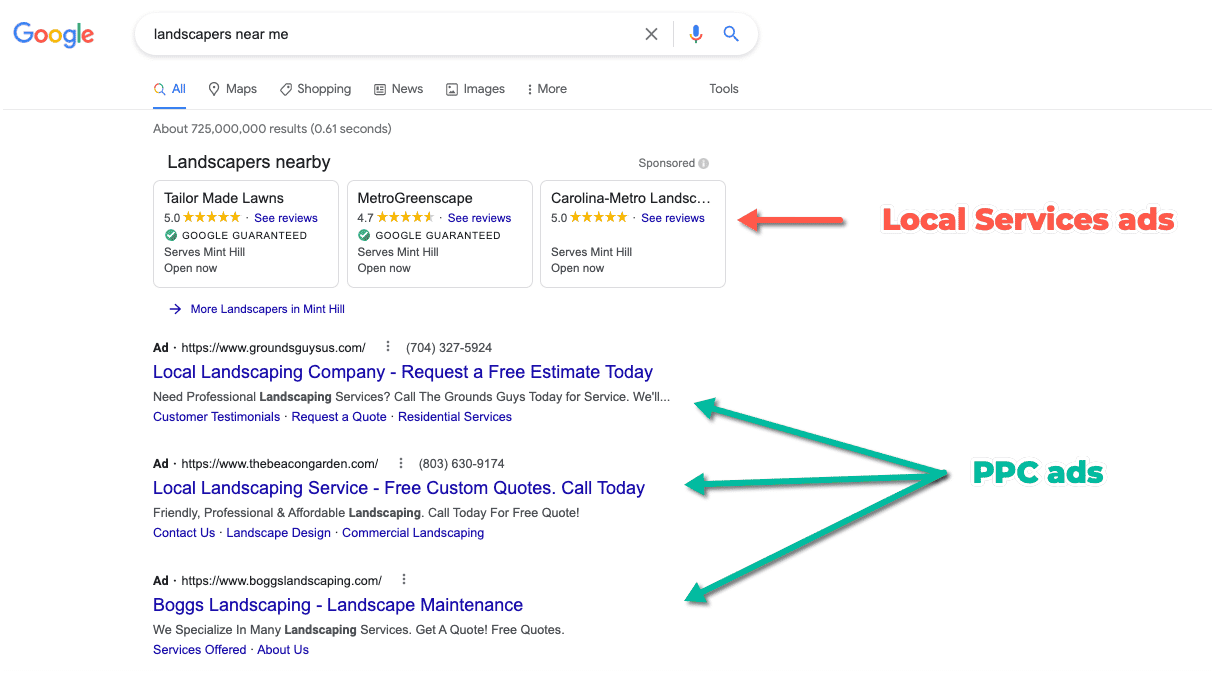A Deep Dive Into A/B Testing and Pay-Per-Click Campaigns
A/B testing, also known as split testing, is a methodology commonly practiced throughout pay-per-click (PPC) advertising. A/B testing allows you to separate a specific attribute of your account into two individual variables to test against each other: the control variable and the experimental variable.
- Control Variable: Nothing is altered within the current strategy or practice.
- Experimental Variable: Some part(s) of the strategy or practice is changed in order to test against the control variable.
In this blog, we’ll dive into why A/B testing is a healthy way to improve your PPC performance, what to test, and how to determine if your A/B tests are a success or failure.
Why Do We A/B Test?
As a PPC specialist, it is our responsibility to optimize our clients’ Google Ads and Microsoft Advertising accounts continuously to generate the best and most efficient campaigns for our clients (i.e., more conversions at a lower cost-per-lead).
Assuming our clients’ budgets and campaigns produce high enough search volume, there are constantly more avenues to improve PPC performance and apply alterations that can be beneficial to the client and provide a higher ROI.
When split testing PPC ads, we visualize current performances on existing strategies while comparing data side-by-side to a new practice (the test) that we believe will yield stronger results.
In essence, these side-by-side comparisons are variable A versus variable B. Data determines the winner.
With A/B test data, we are able to bring clarity to ourselves, our team, and our client to open opportunities that may have a positive impact across the account analyzed.
A/B Tests Improve Long-Term PPC Performance
A priority for us, as PPC specialists, is for these tests to improve our metrics, whether that be impression volume, click volume, conversion volume, increasing click-through rate, or decreasing overall cost-per-lead and cost-per-clicks.
In theory, increasing impression volume will drive more clicks to the site, which will benefit volume constraints. Having relevant keywords and ad copy (including headlines and descriptions) will allow you to capitalize on these clicks and, in turn, increase click-through rates. With an improved click-through rate, we are able to drive more potential leads to our clients and provide them with better results. Once we are able to convert at a higher rate and decrease our overall cost-per-lead, we are able to manage our budget in a way to spend more on channels that are proven to be successful and drive quality leads.
After the experiment is complete, we determine whether or not the test conducted was successful. If it is, we apply the experimental variable to the entire campaign in place of our preexisting strategy.
If we deem the experiment to be a failure, we will stop running our control variable and continue running with the preexisting strategy that was in place prior to the test.
When Do We A/B Test?
No matter who manages your PPC campaigns, they should constantly run A/B tests in an attempt to improve campaign performance and efficiencies. It is important to identify and locate any pain points within the account that can be addressed. When these are located, it is time to determine the best approach to the issue.
Typically, the largest areas for growth are campaigns that have the most search volume because we know there are areas to improve at a much faster rate than one that accrues less spend and search volume. In other words, high search volumes produce a rich set of data for analysis. Testing a campaign with low volume results in insufficient data and, therefore, skewed results.
When split testing, it’s ideal to test a PPC campaign that has been running for a few months and has generated enough tangible data and conversion volume in order for our tests to run efficiently.
Where Do We A/B Test?
When deciding to run A/B tests, there are several aspects of the advertising account that we can test against each other. The most commonly practiced A/B tests for PPC include, but are not limited to, advertisement creatives, advertisement extensions, landing pages, bidding strategies, etc.
Ad Creatives
Ad creatives are any form of content that aims to convert a potential lead for your business into a customer via paid ads.
Ad creatives and ad copy are encompassed within Google Ads and Microsoft Advertising. Here, we can set up multiple ads with their own respective components to test against each other. Some of these components include:
- Testing out different headlines to engage with searchers
- Using diverse ad descriptions to convey a strong and effective message to our audience
- Testing several landing pages to analyze where performance increases in terms of conversion rate
Ad Extensions
Ad extensions are additional pieces of information displayed with your ad that assists in expanding your advertisement, giving people more reasons to choose your business.
Sitelink Extensions: Additional links that you can include in your ads that take customers directly to specific pages on your website.
You can A/B test several sitelink extensions to determine what drives more clicks, cheaper clicks, conversions, and overall performance.
Sitelink extensions have the capability of being applied at an account, campaign, or ad group level.
We also split test headlines, descriptions, and landing pages for this specific extension.

Callout Extensions: Small insertions of text that appear with your search ads and highlight additional features or benefits of your products/services, such as free consultation, lifetime warranty, and emergency services.
Callout extensions are useful to test when trying to compare what highlights and features users are seeing that attract them to your page.

Structured Snippet Extensions: Highlight specific aspects of your products and services. They typically increase ad performance by giving people more reasons to click.
We use structured snippet extensions in most cases to highlight services that are provided by our clients. Structured snippet extensions serve a similar purpose to our callout extensions.
Here, we can compare specific client amenities, brands, models, service catalogs, and many other aspects against each other.

Promotion Extensions: These allow you to apply a small piece of text with information about your store’s promotions as well as a link to your final URL near the bottom of your ad.
With these, we have the power to A/B test coupons and ongoing specials that the client provides.
Promotion types include monetary discounts, percent discounts, up to a specific monetary discount, and up to a specific percent discount.

Lead Form Extensions: Lead forms that are attached to your ad to help you immediately capture user information when they search for your company, products, or services on Google. The extension was created to replace the need for directing prospects to a landing page to convert.
Since these are lead forms, there is a lot of liberty in what or where you might want to split test against a separate lead form.
Lead forms extensions offer a unique headline to capture your audience, a description tailored for whatever service you are advertising, customer contact information, work information, customizable qualifying questions, background images, and call-to-actions.

Bidding Strategies: Your bid strategy type is how you’ve chosen to set bids for your ads. Strategies can be manual or automated, depending on your performance goals. Through Google, you can test your control campaign against your experiment campaign to determine what bidding strategy provides the best return for the client. You can change your bid strategy type at any time. Below are a few examples:
- Enhanced Cost-Per-Click (ECPC): This helps you get more conversions from manual bidding. ECPC works by automatically adjusting your manual bids for clicks that seem more or less likely to lead to a sale or conversion on your website.
- Maximize Conversions: A strategy that automatically sets bids to help get the most conversions for your campaign while spending your budget
- Target CPA: A strategy that sets bids to help get as many conversions as possible at the target cost-per-acquisition (CPA) that you set.
How Do We Determine if an A/B Test Is a Success or Failure?
When determining if an A/B test is a success or a failure, there are a few different components of split testing we take into consideration.
The strongest factors in determining success are qualified leads and cost-per-lead, however, depending on the goall of your tests, thse can vary. At Blue Corona, we consider a successful test to be one that has provided the most value to our client’s short-term and long-term goals.
If a test increases search impression volume and qualified leads, while also decreasing our cost-per-lead, this yields the largest value to us and our client, making this a no-brainer to apply the experiment variable over our control variable.
The Home Service Industry’s Leading PPC Advertising Services
At Blue Corona, we implement A/B testing into every client’s PPC strategy, driving more qualified leads and sales at a lower cost for residential service businesses. No matter if you’re an HVAC contractor looking to increase your visibility on Google, a moving company looking to fill your schedule with moves, or a plumber with a goal to sell more service agreements, we have you covered.
Let’s Grow Your Business Together
Looking to get more qualified leads from your Google Ads and Microsoft Advertising campaigns? Contact us today to learn more about our PPC advertising services.





Recent Comments